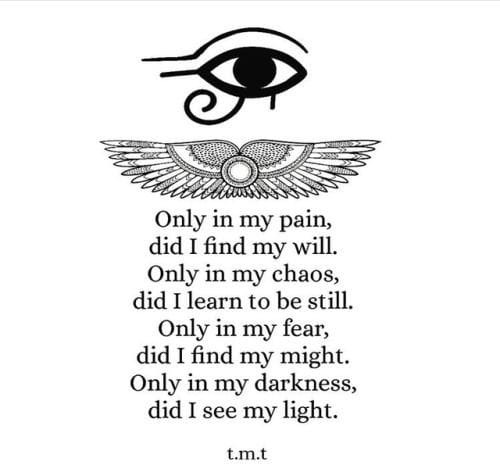#spiritualjourney
Text
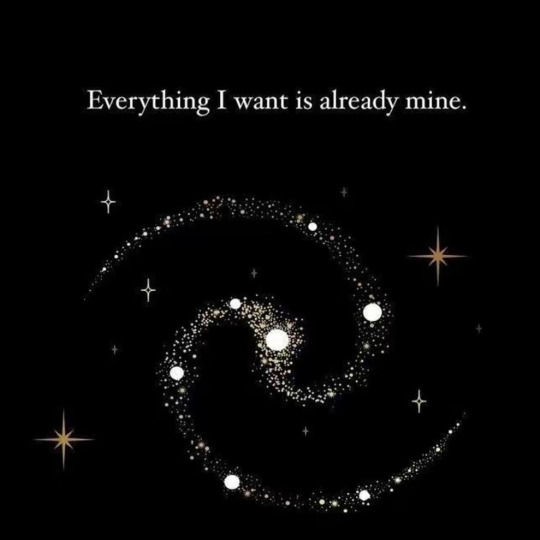
Yes it is and so it’s yours
#spiritualjourney#spiritualgrowth#healing#growth#personal growth#love#self love#spilled thoughts#loving yourself#spiritual development
13K notes
·
View notes
Text
A LOT CAN HAPPEN IN A MONTH. TRUST GOD.
#self growth#self healing#self love#spiritual vibrations#spiritualawakening#spiritualjourney#house plant#plants#black women#black girl moodboard#holisticdevelopment#holisticwellbeing#holisticwellness#holistichealth#holism#holistic medicine
5K notes
·
View notes
Text
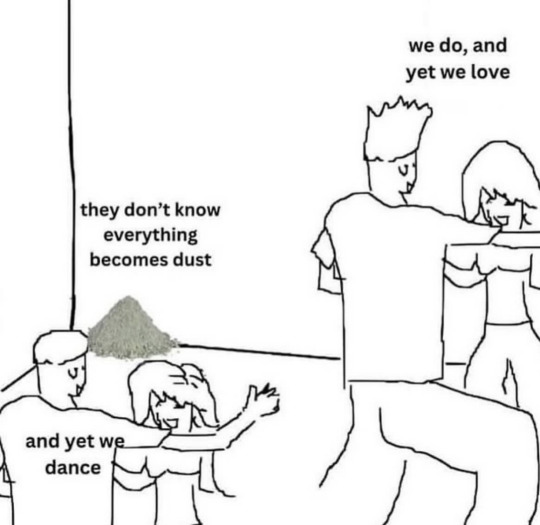
and yet we dance!
#theology#spirituality#christianity#christian blog#christian faith#catholiscism#catholic#spiritual memes#spiritualjourney#spiritualgrowth#spiritual awakening#spiritual development#spirtiuality#spiritual knowledge#optimism#optimistic#positive mindset#positive energy#positive affirmations#positive thinking#positive thoughts#positivity
3K notes
·
View notes
Text

#law of attraction#law of the universe#energy#positive energy#creation#manifestation#spirituality#creativity#creator#affirmations#law of manifestation#spiritualjourney#the universe#intention#positive thoughts#spiritual awakening#spiritual development#spiritualgrowth#witch community#witchblr#wiccablr#manifest#law of assumption#abundance#quotes#spiritual quotes#life quotes#beautiful quote#love#goals
4K notes
·
View notes
Text
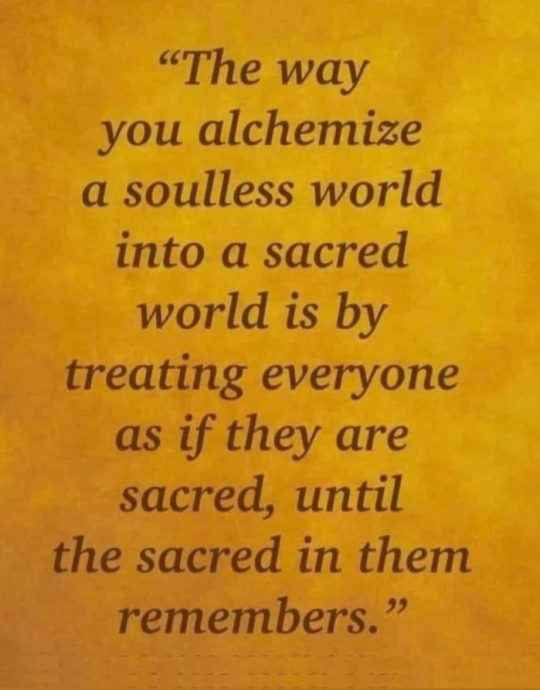
👑💛🌟🕊️
#spirit#spiritual quotes#spiritualjourney#alchemy#sacred#sacred heart#magick#witch#witches#witches of tumblr#spiritual development#spiritualguidance#spirituality#spiritual awakening#awakening#kundalini#spiritual knowledge#spiritualhealing#spiritualgrowth#spiritual#quotes#words#love#life#intuition#intuitive#soul#soulful#souls
2K notes
·
View notes
Text

#lightworker#blessings#spiritualgrowth#happiness#tarotofinstagram#healingjourney#healing#earth magic#daily tarot#crystals#shamanichealing#shamanism#etsyshop#spiritual awakening#smallbussinessowner#spiritualjourney#spiritualguidance#spiritual journey
680 notes
·
View notes
Text

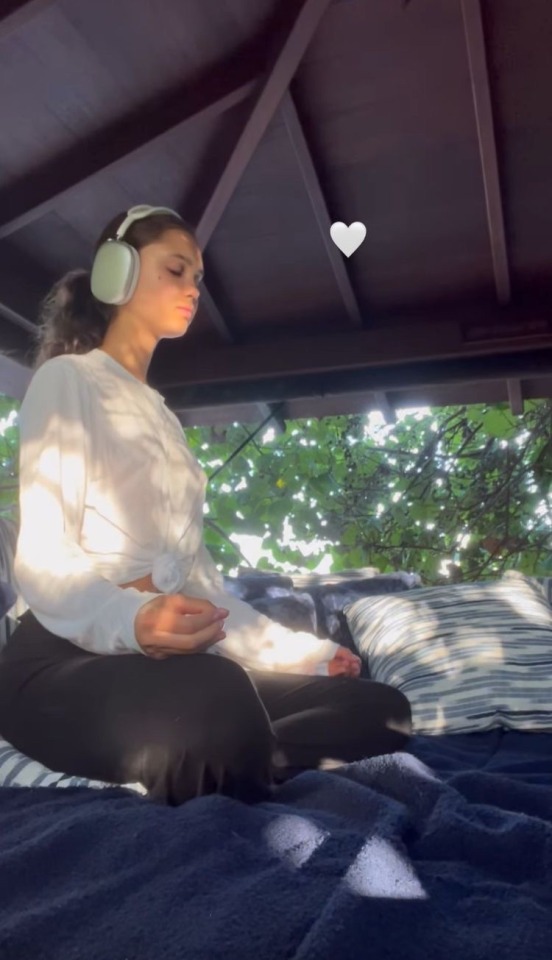
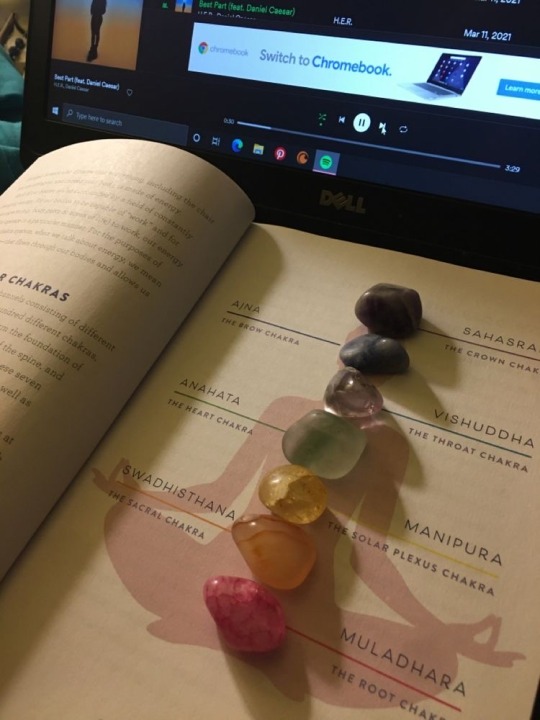



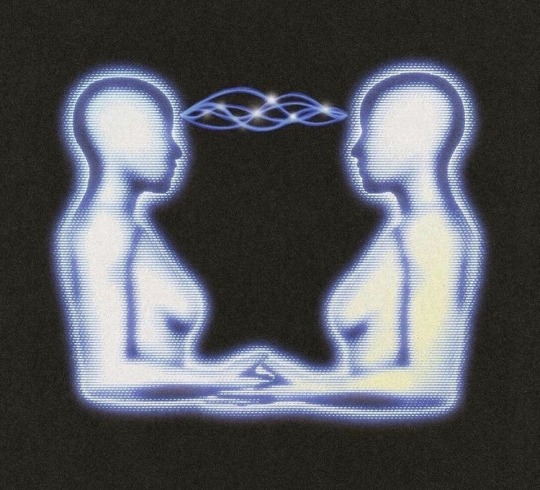



2023 mini vision board✨
The vibes I want for my 2023 year💗
#2023 goals#spiritualgrowth#law of assumption#spiritualjourney#health#health is wealth#black femininity#high maintenance#january 2023
4K notes
·
View notes
Text




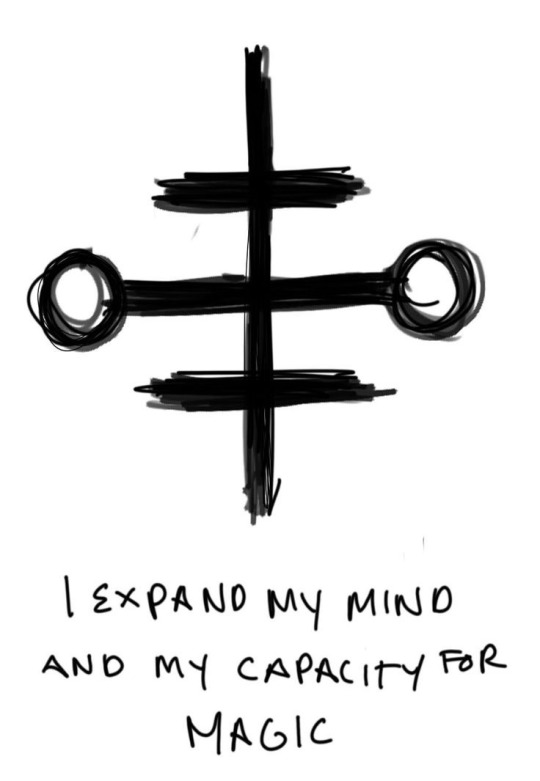

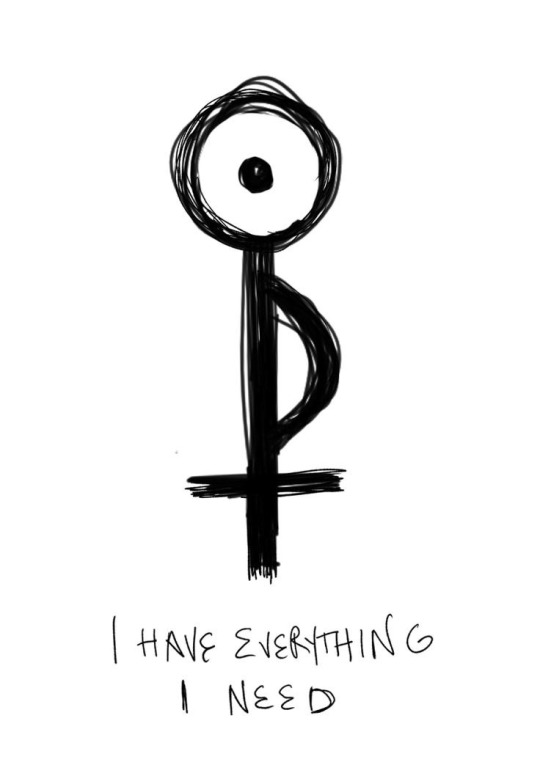

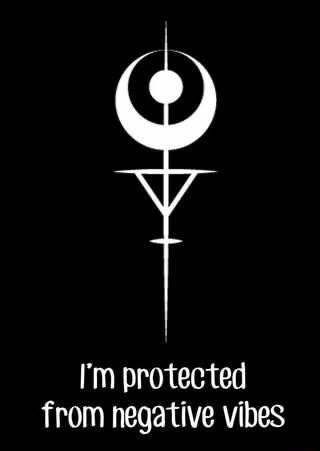

#sigils#witchblr#witchcraft#witch community#witchyvibes#witchy#witchlife#spiritual#witch tips#magic#witch#sigil magic#sigilcraft#sigilwork#spiritualpath#spirituality#spiritual awakening#spiritualjourney#spiritualawakening#spiritual community
898 notes
·
View notes
Text
𝚈𝚘𝚞𝚛 𝙽𝚎𝚡𝚝 𝚁𝚎𝚕𝚊𝚝𝚒𝚘𝚗𝚜𝚑𝚒𝚙:
(What it’ll be like, the energy they’ll give off, how they’ll feel about you, the purpose of this relationship, their next actions, & advice.) (For some of you this is a current relationship.)

𝘛𝘩𝘦 𝘗𝘪𝘭𝘦𝘴: (left to right)

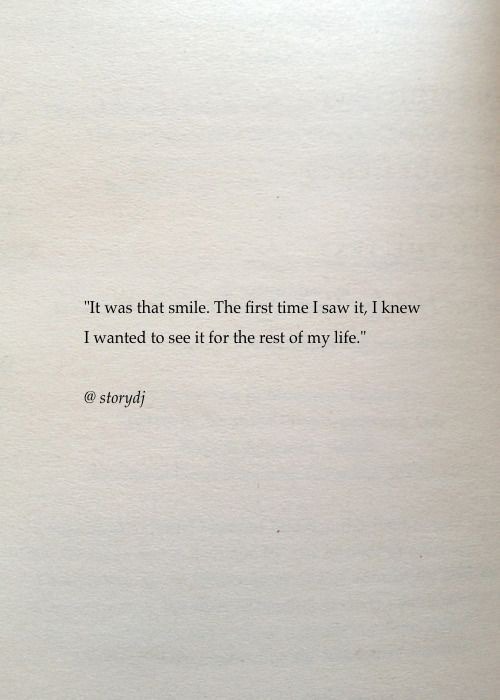


♡book a reading here♡

Pile One:
Hey, pile one. It's clear to see your next partner will feel like they feel true love with you. You will be teaching them important life lessons, and because of the way you love them, it's going to help them see their worth. They may have been in unhealthy relationships in the past and I feel like with you they're able to let their guard down and be open. I feel like they had trust issues and settled for less than they deserved in their past relationships and in general, but with you they finally see what love should be like.
The connection between you and this person is definitely not new. This is someone you have history with. If you don't resonate you may want to choose a different pile. So, what I'm getting is that this person has been carrying a lot when it comes to how they feel. They haven't been letting you see how they feel, talking about it, or asking for help even though they feel like they need it. They're going to be feeling indecisive, confused, and second guessing themselves because they're scared of making a choice to commit or not to commit. They know they'll lose out on a good person, and I feel like for some of you, they're having a hard time choosing between you and another person, or whether they want to commit or not. It's like they have this one foot in one foot out energy. Whatever the case may be, I see this person trying to balance out their life. Financially, romantically, spiritually, and emotionally. Maybe even their family life as well. They're definitely going to be juggling a lot all at once and trying to keep everything under control. I feel like they haven't been taking any action or putting in effort into the relationship with you and it feels like they're a bit closed off and hesitant to open up to you because of their fear and insecurities. They could've been a player or was stuck in their ways and with you I feel like you made them feel something they've never felt and even if they hide it well from you, they feel deeply for you. For some of you this person will confess how they feel unexpectedly, and it won't happen right away. You may already or will be going through a period of hot and cold energy, ups and downs, talking then not talking until you guys finally come together. If you even want to be with them. I am seeing that you will feel tied to them still. For some of you, this person may be someone you have history with like I said, and you separated, and during that time they got with someone else but didn't fully commit to that person because they still felt for you, and you felt for them as well, but this wasn't ever said by them. Maybe by you though.
The energy of your person when you guys are going to be getting in a relationship will come off as them being very patient, career oriented, and ambitious. I feel like they're learning to think long term and more practical about the connection with you. In the past they may have not been someone who normally committed or really invested their time and energy into the right things. I feel like they used to think in a more temporary way and let their immaturities and bad habits get in the way. They're going to be the one to initiate having a committed relationship with you because I feel like it aligns with their goals and plans that they have for their future. They see you being a part of it, and I feel like they weren't an honest person in the past. They used to be very sneaky and maybe even deceptive. They also never expressed how they truly felt to anyone because of their own fears. I feel like they'll be wanting to heal with you and spend time alone away from others, meaning blocking the outside noise and interferences out so they could focus more on the relationship with you and bettering themselves. I feel like they will feel very frustrated with themselves because they allowed disruptions and third-party situations to get in the way of them showing up and being there for you. They will be strengthening their faith and cleansing themselves of all the things that got in the way of the relationship and their growth. They will have faith that things are going to get better, and I see them being confident in their approach and wanting to build a home and the create the feeling of success with you. I feel like when they think of their best self they think of you. They only feel like their best when they're around you and you remind them of love. (I literally cried on this part). I feel like you are what they need in a healthy way. You encourage them and inspire them to be better. I see them definitely surprising you and unexpectedly coming clean about how they feel about you.
I feel like this person was very superficial and let materialistic things including their ego control them. This affected the relationship between you guys because they weren't being as genuine as they should have been. I see them feeling bad and really guilty because they know you're the victim in a sense. They know they messed up and they can't run from it anymore. You could have left them because you were fed up with how they acted and treated you. I feel like this triggered them and they realized like "damn they really leaving me." When you guys are getting into this commitment with each other all of this will be on their mind. The history, how they made you feel, how they want to change, and how they want to treat and love you the way you deserved to be loved. They ignored the love and passion they felt for you because it was too intense. Not in a bad way either, they just couldn't handle it. I feel like they don't want to let you go. They don't want to lose you and they will feel a bit powerless because I feel like they're insecure. They don't know if things will work between you guys, but they want them to. I feel like they lack the confidence because your answer or how you feel will determine whether or not you guys are really done. They will be a bit scared of coming towards you and expressing how they feel, but they will. They want to heal and let go of the past. They also want you to heal and they know how much they've disappointed you. I feel like they were feeling so ashamed because you were good to them, and they took you for granted. They trust you; they love you, and they feel like you are the one for them the timing just wasn't right in the past. They want to protect you and the relationship from anything that tries to destroy it again, even themselves. They don't want to hurt you anymore and I feel like they genuinely want to change their life for the better to be able to have you in it. I feel like they cry about you a lot as well.
The purpose of this relationship is to teach the both of you valuable lessons about your self worth, faith, and life in general. I feel like you both will learn forgiveness, honesty, and how to really be your genuine selves. You both argued a lot and I feel like there was so many harsh words said, and painful experiences learned throughout the connection itself and even not being involved with each other, but still being on and off, you both learned lessons with other people and situations too. I feel like for them the lesson was way bigger than it was for you just because they've genuinely never felt deep love and a real connection with someone. That's not to say you felt any different than they do, but it hit them really deep and took them a lot longer to catch on to the truth of their feelings, let alone the connection itself. You both will learn that good things take time and they're challenging. Sometimes you gotta go through hell and back just to find peace. This relationship will lead to commitment and marriage and give the both of you what you really need out of a connection. I also feel like the connection happened so suddenly for the both of you and it was a miracle. Like it was divine intervention when you guys met each other. Could've even been at a party or through a cousin and/or friend. It caught the both of you off guard and neither of you expected to fall in love with each other or to be where you are in the point of time when you're actually committing to each other for the long run. Some of you will even have kids together and things will feel so surreal, almost like a dream come true. I feel like things were going really good in the beginning and maybe even a little too fast and you both needed to learn big lessons so God took the connection and started created situations and experiences so that way you guys can both slow down and start paying attention to the things you needed to see. It may have felt like the worst things started happening and the relationship just started to fall apart out of nowhere, but really it was coming together, and your old lives were changing massively and the energies that kept you stuck were being purged and released. I feel like you both learned to have faith and to trust in divine timing and not your own. It's like God placed you two together and even when you tried to run from them, you couldn't. It's the same way for them. Neither of you can explain the connection or how you feel about each other, but it's deep and it's real.
Your person's next actions will be taking responsibility for their decisions. I feel like they know everything they did to hurt you and all that stuff. I see them wanting to make up for it and they will through their actions literally. There will be challenges of course and a lot of conflict surrounds your person in some way. I feel like there's just obstacles and difficulties they will be dealing with and trying to overcome within themselves and in their life. They are going to restore balance and harmony in the relationship, it's just going to take patience and perseverance and they want to know if you're on board or not, so I see them communicating to you what it is they want and waiting for your response. I also feel like they're going to be tapping into their intuition to try and feel your energy in some way. Like they're going to be trying to read you and look deeper into what you say and do because I feel like you are a bit mysterious and they want to know what's on your mind and what you're doing, feeling, who's around you, and everything. I feel like they're a bit nosey because they care whether or not you're entertaining someone else or if there's something bothering you, they just care about the small things, and they don't want to miss a detail or accidentally miss that you are upset or struggling in some way and just not showing or telling them. I also feel like if you were unfaithful to them in some way, they are going to be working on healing from this. If that doesn't resonate, they're releasing past trauma and fears due to deception that happened in their past. They're also scared of trusting you because of their own deception and how they mistreated you. They don't want you to take revenge or somehow get back at them for hurting you. I also feel like it's hard for them to get through to you. You can come off as very cold, detached, and not revealing too much when you're upset, and they don't want you to leave them so I see them doing all they can to mend things with you.
The advice for you is to learn from your past, use your wisdom and discernment moving forward. Know that endings bring new beginnings and it's time for change. This relationship will change and grow from where it is currently and so will you. Embracing change and learning to live life open mindedly will help you. Letting go of pessimistic feelings and feelings of resentment, apathy, and bitterness will benefit you and the relationship itself. Being happy on your own and learning to embrace your own company and feeling content within yourself no matter what. You will be successful and when you allow yourself to feel accomplished and happy you will start to manifest changes in all areas of your life. I see a wish fulfillment happening and Spirit is saying to allow the energy of expansion into your life. Do new things that bring you joy, connect with others, be open to change, and embrace the lessons you've learned. You gotta learn to open yourself up wholeheartedly. It's also important to embrace the present moment and allow yourself to feel joyful and abundant. Have more gratitude and compassion towards yourself and others.

Pile Two:
Hey pile two! I feel like your current or next partner will be someone who felt love at first sight with you. They could definitely love your smile and same for you about them. I feel like there is a very deep spiritual connection between you guys and none of the superficial things can get in the way of that. You both love each other deeply and you'll be very supportive of each other in every way. I also feel like this person will be someone you can always depend on to be there, and they'll always be your biggest fan, lifting you up when you're down, investing in you, and I feel like quality time will be a big thing between you.
The relationship between you guys will move very gradually. It'll take some time, effort, and patience to build up the momentum. However, I feel like the attraction and connection will happen very quickly. Things will be very passionate, and I feel like they'll be caring, charismatic, and show you exactly how they feel about you, boldly. I see both of you balancing and healing each other in the places needed. They will be someone who is very mature and they know exactly what they want and how to get it. Not in a bad way. I also feel like sexually there will be intense chemistry and it'll be very exciting. This could be a new person for a lot of you. I see them showering you with love, affection, and attention. They definitely want to provide for you, support you, and lead you in a good direction. I feel like things will be so peaceful and flow almost effortlessly, but of course you both have to put in effort. This relationship will be divinely guided, and I feel like there is this telepathic, magical, feeling you get with them. It's like you connect very deeply in every way and sometimes you know what they're going to say or do before they even do it. It's like you read each other's energy. I also feel like the third eye chakra is very significant. You may have had dreams about this person or intuitive nudges like yeah this is the one. I also feel like in the beginning, obviously commitment won't happen immediately. It's going to take time because you're both finishing certain cycles in your life and letting go of toxic behaviors and addictions. I feel like you may be frustrated in the beginning because you don't quite understand why things are happening the way they are and you may be facing obstacles that require you to have a great deal of patience and persistence. I feel like things won't be super emotional at first because you and this person are being pushed to focus on creating stability for yourselves and learning how to feel abundant without all the superficial things. Sometimes you both may wish you can just be together and forget all of the problems and responsibilities in the world. There is a lot you won't see in the beginning but give it time things will bloom when they're meant to.
So, the energy this person will give off is someone who is charming, exciting, idealistic, and very assertive and passionate. I feel like they will be experiencing a hard period of their life when you meet them. I feel like for some of you this is someone you already know who take it how it resonates, but there is distance and separation. I feel they may feel frustrated and moody because of it. Whatever they're going through, they're going to be quite overwhelmed and guarded over their feelings. I feel like they may be scared that you will leave them, and they've been in very toxic situations to where they're a bit co-dependent at times. There is an energy of co-dependency here. It could also be them fighting addictions and bad habits of co-dependency relating to a drug or specific thing that they indulge in. I see them being very loving, generous, and affectionate to you because they don't want to lose you. They're going to be open to receiving your love and anything you give them because they want a relationship with you. I do feel like you know things about this person that they're scared of, almost like they're assuming you may hold it against them. They may have been a player, a liar, a cheater, doesn't have the best reputation and they're aware of it. I also feel like for some of you if you already know this person, they may have ghosted you and entertained other people, and you feel for deeply them but you're not about to allow yourself to be played. It's like they wanted you to chase them at some point. I feel like if that's the case for you, you distanced yourself from this person and they're aware of it. They may even be avoiding you themselves. They will come in to ask for your forgiveness and hope to balance things out between you guys again. For others, I feel like this person did some dirt in the past either to you or in another situation, and it's catching up to them and their karma will be weighing on them and the connection they have with you. They'll be trying to make the best of the situation, but it's going to be challenging for them to be open and emotionally available for a little bit because of the guilt and burdens they may be releasing. For those of you that know this person, they came to you with this strong and passionate energy in the beginning, then I feel like you bonded quickly and connected so deeply it scared them and they went on full defense mode and started acting nonchalant. They are used to being in control and dominating others, but with you they feel a bit vulnerable. I see they may have started acting different with you and stopped doing the things they did to get you in the first place. Their energy switched up.
I feel like they really do love you and they don't quite know how to show you that. You're so gentle, kind, nurturing, and protective of them. They love you for who you are, and I feel like they have a vision for their future with you in it. They're just really anxious and scared of opening up to you because of their insecurities. They have trust issues and fear emotional intimacy. They feel like you're very self-assured and independent. You guys will share the same goals, values, and morals. I feel like they want to be a team with you and come together to make things work. They want to overcome challenges and obstacles together, but it's just taking time to get to where they feel open to expressing this to you. Cigarettes After Sex could be significant. I feel like for you, you haven't met the best type of people when it comes to relationships, and it sometimes makes you feel a lack of faith in love. They feel like you're looking ahead and trying your best to stay motivated and focused no matter what happens in life. You don't want to get too distracted or sad especially about them, but they feel your energy. They feel like you're in a low spirit and feeling a bit hurt emotionally. They've seen your best or at least your uplifted energy and they know you're struggling right now no matter how much you keep it together. I feel like they feel you're scared to love again, and you hide how you feel because of it. You don't normally open up about how you feel, it could be because of a lack of trust or fear. You might even be really cold at times even though you don't want to be. Even if you don't know this person, which most of you do but they will feel your energy heavily. I speak in the present moment because it's energy, but it doesn't mean it's happening now in this moment although it could be. I feel like you feel depleted of your compassion and sympathy, and they feel this too. They know you're very discerning and careful about who you love and where you invest your time, love, and energy. They actually admire how smart, independent, and compassionate you are. I feel like deep down they know you love so deeply. It's just the energy you give off.
The purpose of this relationship is to teach the both of you how to get out of your own heads and to open yourself up to new things in life. It's like the both of you are going to be in need of excitement, optimism, and passion. Life may be a little dull and this connection is going to brighten things up for the both of you. I feel like this is a divine relationship and together you will accomplish many things you didn't know you would. It's definitely going to teach you both how to be patient with good things. I also feel like you will both learn to deepen your faith and start listening to your intuition more often. I see both of you learning to let go of things that you deeply held onto for the sake of your own pride and learning how to trust in God's plan for your life. You both will be feeling more confident and like your best selves around each other and when you're apart you'll definitely feel each other's energy even stronger. I also feel like you will go through a lot with this person and it's going to show you that no matter how much time passes, how challenging things get, or how far apart you are, love will always win. Music will be a big thing between you as well. You and this person may overthink your feelings about each other because you never felt anything this deep. It's so easy to just walk away and settle for something less because putting in real time and effort is hard sometimes. It's hard to open up and truly be open with your love and show yourself for who you really are. But for this love, I see both of you learning to surrender and letting go of control.
I see them realizing they like themselves better with you and taking actions to open themselves up to you. I feel like they're going to be very excited when they pursue you about their feelings and they have this very gleeful, childlike energy when it comes to you. Not in an immature way either. It's like they feel safe and comfortable around you. You bring happiness into their life where they only felt darkness. I feel like they're putting down the swords and done being closed off about how they feel. They put themselves in a place to be in a combative energy towards you anytime you wanted to speak your mind to them. It's like they didn't want to understand you and didn't try to be open to a thing you said to them. They stuck to their beliefs and what they felt like they wanted to say or do and shut you out in a way. They're going to reciprocate the love you gave to them back to you. I feel like they're also reflecting back on good memories or conversations they had with you to remind them of how good it feels to be in your presence. They're gonna come in quickly and unexpectedly because they felt eager to act upon their feelings. They are confident things will be very good between you guys and there is so much potential to create in this relationship that they will be ready and determined to make it happen. Like I said before, if they entertained someone else or got with someone else, all they thought about was you. They love you and they been known this, they just never said anything because they were too much in their ego to act upon what they really wanted. I feel like the changes they needed to make, they weren't ready to make, and out of the literal blue you can expect them to express how they feel. If you don't know this person, I feel like you will get in a connection with someone not expecting of this to happen, but then it does and catches you off guard. Of course, every situation is different, but you will know where the pieces fit for your life. Your love moves this person in ways they can't even explain so know that they will mean whatever it is they say to you.
The advice for you is to move on from the past experiences, thoughts, feelings, and people that are interfering with you and your growth. I feel like you'll have let go of things that negatively impact your thoughts about love and this relationship in general. Move at your own pace when it comes to opening up emotionally and be more patient with yourself. There is no need to rush. Things will move at a steady pace for you two anyways because of how they feel as well. I feel like working on your confidence and building stability within yourself will help you in general and in the connection. There may be a certain attitude you've been feeling towards life at this time that may feel apathetic, unhappy, and just a bit miserable honestly. This is the time to focus on changing this, so it doesn't affect you or your relationship later down the road. It's time to let yourself live and experience the feeling of joy. Also let go of the fear of rejection. I know it's easier said than done, but it's affecting your self-esteem negatively to where you don't want to love or open yourself up anymore. You may tell yourself you're fine with being alone, you don't need to be in a relationship, you don't want to be with them anymore, but in reality you actually do. You're hurting over things they did that hurt you or over things from past relationships and it's putting you in a resentful and bitter type of energy. This is what you need to focus on in this very moment. Being mad and angry won't solve anything. It's okay to feel disappointed and upset, but do not live in that energy forever. Don't build your life around your pain. Learn from what happened in your past with them or in general so you can fully open up to this person. Don't allow gossip or other people to get in your head about them. You know how you feel. Other people don't really understand how you feel deep down about certain things and it's not good to always take advice from others. I also feel like if you gossip about things that happen in your love life, it's better to keep things to yourself. This new person or new energy of a current person is someone you are meant to be with. It'll work if both people are willing. You must be willing to do your part as well.

Pile Three:
Hi pile three! I feel like you and your current or next partner will feel like you are ride or die. I see you both sticking together and never against each other no matter what. I feel like even when you may argue or disagree you come back together quickly and always forgive each other. You also will be deeply intimate with each other in every way, and I feel like they'll never want to let you go. I'm feeling this energy like you both will have gone through a lot in terms of love, and taking deep breaths to relax yourself will benefit you greatly and help to loosen up a bit, especially if you've been feeling tense emotionally. I feel like for those of you who know this person already, they are sorry about neglecting you and not being as supportive and loving as they could've been. You may not trust them or have a hard time listening to anything they say because of how they've disappointed or betrayed you in some way. Take that how it resonates. For others I feel like sometimes you may doubt this person's love for you and not fully trust that they mean what they say because of your past. They will be a bit distracted or not as focused on you in the beginning of the connection/relationship because I feel like they may be focused on work, or something else is taking up their time and energy. I definitely see if this is a current relationship, you're going through a bit of a rough patch, and you don't feel as open and trusting when it comes to this person. They feel like they're going to have to dig deep within themselves to learn how to better express their love and make certain life changes because they don't want you to leave them or see you with someone else for that matter.
The relationship itself will be balanced and harmonious between you. I feel like you bring light to their world and help them understand themselves and love better than they ever have. I feel like the relationship is going to help both of you feel more complete and happier with each other. At times both of you feel dissatisfied and a lack of confidence in the connection because of fear. These fears are things that kept the both of you stuck and feeling like you had to escape this relationship or intimacy in general. I feel like both of you dealt with toxicity in love. I see you and this person are both people who overthink your feelings and experiences to the point where you may self-sabotage or make fear-based decisions at times. I feel like you and this person will be going through a phase in your life where work could be draining, you're dealing with family conflicts, conflict in your relationship, or just in life. Whatever it is, things have felt a bit cold and lonely emotionally, either during your current relationship or when you meet your new person. You're both going to be deeply in love but in the initial stages of the connection, I feel like things will be a little dull and not as emotional between you. I see them feeling a bit insecure and unsure of their self. I feel like they're learning their self-worth and trying to feel more grounded within themselves because the changes that are happening around them are a bit overwhelming and I feel like they're trying to embody an independent and self-assured energy. Sometimes they also may come off as very confident and like everything is fine, maybe even a bit egotistical at times. I feel like they're going to be trying to hold onto you and the relationship and trying to do just enough to keep you from leaving, but not enough to maintain the relationship. You may feel a bit sad and shut out by them in a way and I feel like they're too distracted to really notice or empathize with how you're feeling. They're going feel unhappy with what they have materialistically speaking and taking you for granted in a sense. It's like they're hyper focused on boosting themselves up and too scattered to actually see how they're affecting the connection. I see they feel deep love for you, but I see them trying to hide how they really feel and only reveal so much because they feel like how they feel is a burden to them in some way. I feel like in a way they are at a distance from you, and they feel like if they allow themselves to feel too much, they're going to lose control in some way. I feel like this person doesn't necessarily know how to multitask. They're also very scared of change. When they focus on the relationship, they really focus on it, but their main priorities or what they value more comes first. They could feel like in order to have a relationship for the long run they have to be financially stable. They want to feel good and abundant so they can share this with their partner. I feel like they just need someone who will believe in them and support them. Someone who will be patient. I see they will have their guard up and they're carrying this heavy weight because deep down they are actually so stressed out, they just don't share their burdens with others. I feel like they're going to be a little upset with themselves because they feel like they're missing out on some type of change or opportunity to physically be there with you, but they're trying to do things in a way they feel like is right. Take that how it resonates. For some of you, this person literally can't be there physically right now so they're focusing on what they can control. Whether that means they're incarcerated, in a different city/state, or somehow just not near you. They will open up to you about how they feel it's just going to take some patience. They'll need to let go of their ego and be more open to change and learn to balance their priorities out a bit more.
The energy they'll give off is someone who is very confident within themselves and I feel like they are someone who has game. They definitely pull people in a charming way. I feel like they are used to getting their way and with you things are different. They feel like they fell in love with you in a mysterious way. Almost like it was very sudden and unexpected. They didn't think things would go the way they did or will between you guys. I also feel like they will do things to test your love for them. Maybe intentionally or maybe just habitually speaking. They feel deeply for you, so they question whether you feel the same way. They give off this energy like they're going to be enjoying themselves and life. I also feel like they have a bit of an old school vibe. Like early 2000's player vibes. It's giving Justin Timberlake, Usher, Chris Brown. They're also very flirty and playful. I also feel like they're gonna feel like they enjoy being around you and things are fun. However, they don't feel like this is just some little one-night stand, summer fling type of thing. They want to love you. They just have this image they portray, and I feel like you see right past it. They hide their true feelings and I feel like intuitively you'll know this. They either already have or will be someone who gets caught up in the superficial things. I feel like they did have that image of trying to be someone who got it like that when they really don't. They're guarded in love and trying to pretend to be someone they aren't. Unfortunately, they're gonna need to slow down and take a deep look within and they are going to be forced to do this by divine intervention. I feel like they spend more money than they have, they love the finer things, and they feel materialistic things bring happiness, but they're going to come to realize that's not what makes them happy. They were impulsive, reckless, and a little too free spirited. I feel like they give off this foolish and naive energy. A bit childish even. However, it's their ego. Around the time when you are meeting or getting in a commitment with this person, I feel like they're going to be closing this chapter of their life and learning that they need to grow up. For some of you they messed up with you many times and they're going to want to make up for this. They're in this fantasy of not really knowing how to discern between what is temporary and what isn't. I feel like you just gotta have some patience with them because they are learning. Compassion is needed from you and even if they don't show that they appreciate it, they really do. They know you love them. Despite everything that you may have gone through with them and even them not understanding what temporary fulfillment is, through all this confusion they are only sure of one thing and that is you. You bring balance to their life. I feel like they're going to be going through some karma, legal matters, or a situation where they're facing the consequences of their actions in some way. So, if they're struggling it's just their karma and a valuable life lesson not to take things for granted, especially people who deeply love and care for them. If this is a current person, I feel like they're thinking of the gossip surrounding the connection with you and maybe just gossip about themselves too. They're guilty and if they deceived you, I'm hearing others know about this. Their ego just felt a need to prove others wrong, but they can't hide the truth about who they really are forever. The truth came to light and they're guilty about all of the wrong doings they have done. I feel like people they thought loved them deceived them too as a result of their karma for deceiving you and others and trying to manipulate the outcome of fate. I feel like they're starting to see how they may have judged you and treated you unfairly. They listened to another person gossip about you and made the mistake of taking their side. I feel like they released this person and they're seeing how they were deceived by them.
I see your person resting, trying to spend time self-reflecting, & trying to sleep off how they feel about everything. They want to protect this connection from outside interferences, and I see them healing. They're hoping for a miracle or something grand to happen that will bring change and growth into their life.
How they feel about you is like you lead them in a positive direction. They feel lost without you. You inspire them, motivate them, encourage them, love them, and your very supportive. I feel like you bring them so much joy and happiness. With you they have sight, and they feel a drive to change their life for the better. They want you. No matter how they may act or what front they put on, they want to be with you and only you. They regret not being there for you the way you deserve deep down. They had to do all these things just to distract themselves from feeling how they really feel about you. They want to admit it to you that they were wrong about how they may have acted or treated you and I feel like when they do they know you're going to take pride in it. But not in a bad way, you just know they were wrong and hearing them admit it to you is relieving. I feel like because you want to make sure they're aware of how they hurt you. I'm hearing the song "Here Comes the Sun". I feel like this is a sign clarity and healing are coming. Joy is on its way, and I feel like aside from the worldly things, they know they love you no matter what. This could be someone you grew up with or knew from a younger age for some of you. You've been there through it all. I feel like you met this person when they had nothing. You witnessed them change up and reach a higher point in life just to fall down. But there you are, there for them. You are their backbone. But it's been lonely waiting for them to reciprocate. You give and give, and they know it's their turn to give back. They don't want you to leave them or be unfaithful in some way. Maybe in the past for those of you who are with this person, you both deceived each other. They don't want this to happen and they're afraid you may be unfaithful to them. That's why communication is a bit difficult. Talking to them is challenging at times. They're a bit combative and I feel like they don't necessarily listen or hear you out. They also feel like you may be like this to them too. Even if you guys don't have a history of deceiving each other and this is all fresh, communication is still a bit challenging. Sometimes a little conflict can be healthy and create a feeling of passion between you when it's resolved but be sure not to let your ego just create stress and arguments for the sake of being right. I feel like now is a good time to just go with the flow and let things fall into place. You're a light in their life and I feel like they're at a standstill and feeling a bit stagnant with you right now, but it's because they're learning to see things from a different perspective. You're a bit irritated with them, because of how they've treated you but the best thing to do is reflect and take some time to relax and think before you rush into speaking your mind or acting a certain way towards them. Having more compassion always helps, even when you're tired of loving. If you're overly stressed take a step back and ground yourself. I feel like they just want to get past this with you. All of the challenges and obstacles you've been through together, they just want to overcome these hard times with you. They know the easiest thing to do is leave and maybe that's what they did instead of working things out with you because they know when you speak your mind you really speak it. They could be scared to really open up about how they feel because they know how you feel and how you're upset. They also know how you communicate when you're stressed, you can be a bit hostile or irritable, but for good reason. I see them letting go of this victim mentality and realizing the pain and disappointment they've caused you too. They feel like you guys complete each other and I see them wanting to marry you. Acts of service could be a love language here and I see them really wanting to take care of you and just support you. I'm hearing "in sickness and health". They're finally going to see the way forward with you clearly. I feel like they want to build with you and create success together.
They also feel like you have too much pride too sometimes. Your egos clash, but I see you letting go of your pride and just opening up to them. You’re tired of fighting, arguing, not talking, or just always wanting to be right and so are they. I feel like no one is truly right and both of you are in the wrong in your own ways.
The purpose of this relationship is to teach both of you how to be true to yourselves. I see you both learning to set healthier boundaries and how to express your true feelings positively. This person is learning how to mature emotionally meanwhile you’re learning to mature mentally and change the way you perceive and see into situations. You both bring each other so much joy and love. I feel like you also heal each other’s inner child. I see you both creating the family and home life you’ve always wanted as a child. That revolves around stability, love, security, peace, safety, & a foundation that isn’t temporary. I feel like you both want to have a good life. I mean who doesn’t you know? But together you will both complement each other in ways that are perfect. I feel like you were both divinely made for each other. That’s cliche but it’s true. This is a connection God is helping to be restored and healed. You both could’ve even prayed for God to mend things between you in some way. I see both of you strengthening your faith and learning how to be optimistic even in the hardest of times. You’re both stronger and able to endure more things in life because of everything you’ve been through or will go through together. All things will work together for the greater good.
Their next actions are to heal and spend time self reflecting learning more about themselves. I see them alone, in solitude trying to understand how they feel and why they do the things they do. It’s like they’re trying to understand how everything they’ve ever done led up to the point they’re already in or will be. Especially in the relationship I feel like they want to learn from their mistakes and change their approach. They want to love you better and be better for the connection and for themselves. They are tired of temporary things. I see them learning their worth and how to truly value themselves and love. They’re learning to have respect, understanding, compassion, and patience. I also feel like they’re someone who was stuck in their ways for a long time. I see them gaining clarity about the person they were and how their actions affected this connection or how they love in general. They will express their feelings to you and come clean about how much they’ve been hiding in terms of their love for you. I also see an apology for some of you. I also see they’re going to be more dedicated and faithful. I see them being more perseverant and not giving up at first sight of complications. They’re learning that facing challenges head on and learning to work through them and problem solve is better than just running and ignoring the problems they face. Especially when it comes to saying what needs to be said and doing what needs to be done. They’re maturing in ways they’ve never imagined. Obviously there is always a point in life where we must literally grow up and face things that are uncomfortable in our adult life and they’re learning that those temporary ways and things from their teenage years or young adult life isn’t the way to live forever. Life isn’t always going to be all fun and carelessly adventurous. We must take the time, energy, and effort to nurture and care for the things we want to grow. We can’t just be flighty and scattered all the time and expect things to flourish in a productive and long term way. I see them learning this and making the changes to be more diligent and practical about their approach to the relationship and their life. I also see them being more appreciative of you and the good things in life. They’re going to be more responsible and I see them developing integrity.
The advice for you is to be more patient. Love yourself more, forgive, and take the time to nurture those parts of you that feel most vulnerable. I feel like if you’re stressed out and feeling very tense that is a sign you need time to ground yourself and pull your energy back towards you. Find ways to create peace and stability emotionally, mentally, and spiritually. You don’t want to take out negative feelings on others accidentally or unintentionally. It’s easy to project our fears and insecurities on others when we are overwhelmed or burdened by thoughts. It’s also good to communicate how we feel, but not coming from a scattered or negative way. Communicate your emotions in a healthy way not in a way where you are blaming others or being a bit insensitive. Carefully express how you feel. Giving yourself the time to feel your emotions and sort them out before explaining them always helps. I also feel like be careful and discerning about who you consult in for advice. Don’t always listen to others opinions or feelings about your situations. Nobody knows what’s best for you like you do. Sometimes people will have good advice for you, but not always. Not everyone understands your situation and some people are biased. I feel like you can overthink your feelings and experiences at times and it puts you in a place of fear and self sabotage. You may feel trapped in your mind and the hurt replays over and over in your mind. Know that your life doesn’t only consist of betrayal and deception. It’s not meant to be continuously painful. It’s all about how you see it and your perspective on your experiences. Do you try to see things positively? There is a lesson in everything you go through & even if you don’t understand things right away you will in time. But it doesn’t mean to stop living and enjoying life when you feel hurt. Life involves taking chances and risks because you never know what may happen. But how will you learn and experience things if you don’t allow yourself to? Moving past betrayal and traumatic experiences is important for your growth and your future. Self reflection and spending time in solitude will help you understand yourself better and how you feel. You will overcome every challenge you face even if it doesn’t seem like it. Time never stops and you heal with time even when you don’t want to or have a hard time moving forward. You are forced to move forward always. It’s good to listen to other peoples ideas or plans and come together with people who inspire you or help you grow. Even if it’s forgiving those who have hurt you and working with them to create a better outcome. You gotta learn to trust yourself more and tap into your inner voice. Not your fear or your critical mind, your intuitive side. Your inner wisdom. Be more kind to yourself too. I feel like you may be self critical at times and overthink the negative things you don’t like about yourself and others. Change the way you approach others and situations. Cultivate the feeling of confidence and strength. Find what moves you. What brings you joy and creativity? I also feel like when someone hurts you or is a bit rude and judgmental over you, try to remain calm and collected. It’s best to approach situations kindly and mindfully. Don’t react impulsively and irrationally. It’s time to get out of your head and more into your physical life. That involves making changes, taking action, leading your life in a more positive direction. Rather than staying still and overthinking everything, start doing and feeling. Own your energy and show off that confidence!

Pile Four:
Hi pile four! I feel like your person is in love with you and no matter what happens they love you. Even if you aren’t talking they just want you to know they deeply care for you and I feel like they hope you feel the same for them. They also think about you a lot and people think their crazy for feeling so deeply for you but they won’t deny their love. I also feel like some of you may meet this person after an ending of a tough relationship. Others of you already know this person and after a tough phase of your relationship with them I feel like you’re in this energy of feeling a bit triggered by them, but you’re independent and I see you focused on positive things and moving forward no matter what. You don’t let things get to you and control the way you behave or live your life. I feel like you’re very confident and true to yourself. You know your worth and you know when to set the limit and establish boundaries. You’re very passionate and strong willed. I feel like they love this about you. I feel that after facing tough challenges, obstacles, setbacks, and hard situations you’re maturing and evolving in every way. I feel like something someone else or this person did triggered you and pushed you to endure painful things that pushed you into becoming who you truly are.
I feel like if you guys ever argue or get into tough situations they will want to resolve it quickly because they don’t like to be on bad terms with you. Especially over little things. They feel it’s a waste of energy to be mad or angry. They’d rather be loving you and enjoying things. I feel like you both can’t sleep and you struggle a bit when you’re upset with each other. I see that you got them invested in you. They want to change their ways and love you in the way you deserve. I’m not even hyping you up but the energy doesn’t lie. I feel like things will be very balanced between you and this is someone you will build with financially and romantically. The type of relationship you’ll have for the long run. I feel like you dealt with that noncommittal, doubtful, & unfaithful energy. Either from them or your past relationship. I feel like you’re fighting for love and you’ve endured so much loss and hardship just trying to get the things you want in life. In this relationship I feel like you may be a bit tired and emotionally drained in a way because of all you’ve experienced. There is deep love and passion here but I see you’re going to be struggling with feeling enthusiastic and empathetic because of some type of deception you’ve dealt with. Your trust isn’t there as much as it could be and you’re guarded. I feel like you’re being logical and taking your time with opening yourself up instead of just acting on a desire or a temporary feeling. You’re standing on business fr. I see you don’t let people in easily and they’re gonna have to fight for your love. It’s like prove it. “Don’t say it to me, I want you to show me” energy. You’re letting go of past energies and feelings and just going through a massive change. I feel like you’re ready for new things and making healthier decisions in love and life overall. You’ve been broke down and completely hurt in terms of love and you aren’t tolerating any less than you deserve. I feel like In the beginning of the relationship things will be challenging and they’ll take time to progress. You’re very loving, nurturing, and empathetic but you are also very generous with your love and I feel that you’ve been taken advantage of in the past so you won’t come off as this right away. You are going to be getting over insecurities and letting go of bad habits that create fear. I feel like you’re guarding your heart and protecting your energy so you don’t get manipulated or charmed. For some of you if this is a current partner, they may have did this to you and you’re just not having it. I see you focused on yourself and growing. Although you will love this person you won’t be very open at first. Things are a bit mysterious here and I feel like sometimes it’s hard for them to read your energy and understand how you really feel. You’re very independent and self assured and I feel like they know you don’t need anyone so apart of them feels insecure and like they aren’t good enough for you. They’re used to toxic relationships and codependency but you aren’t like this. You aren’t controlling and obsessive. You’re grounded and you know what you want and you’re very sure of yourself. I mainly see that in the beginning things will be moving slowly and you‘ll be making this person work for your love in a positive way. You have self control and I feel like your not just someone who does things in a irrational and uncontrolled way. You influence and lead others and you push this person to have to change and grow in order to be with you. Your standards for love are high. I feel like they even tried to tell you what they think you want to hear just to get you more invested, but they aren’t fooling anyone. They don’t know how to approach you and I feel like they’re a lil bit intimidated. They may even ask other people for help to try and be smarter about their approach. I see them trying hard to attract you. Im hearing “come correct, or don’t come at all”.
The energy they’ll be in is feeling accomplished and successful. They see building a relationship with you as a goal. They want you in their life for the long run and they’re giving this energy like they’re ready to commit and invest in a life with you. I also see marriage strongly. They’re someone who is learning how to express themselves and they’re doing all they can to study you and new things overall. They’re a bit shy too. At least with you they are when it comes to talking about their feelings. I see they’re someone who watches and tries to calculate all their steps and they get information about you from others or they have ways of finding things out. They watch you or observe all that you do so they can learn to read you. I see them working on their financial stability and how to create long term opportunities. They want to feel successful and happy with you and in life in general and they’re spending time alone educating themselves on all the things they want to invest in. They never really had joy that lasts and they want this. They’re tired of the temporary things and I feel like them spending time alone is helping them cleanse their energy and life of the things that do not serve them or the connection with you. They feel a bit rejected by you because they may have approached you in a way that was flirty and a lil bit immature and after asking for help from others or something like that they were able to get a response or reaction from you in some way. They’re learning how to approach you and what you like from a partner. I see them learning to love you in your love language. They know this love is worth putting in the time and effort for. They don’t know how you got them the way you do but you just move them in ways no one can. I feel like they are learning deep lessons and becoming more self aware. They’re definitely going to be very determined and focused on building and investing. So if that means they’re working overtime or just doing things with more care, effort, and patience it’s because they’re creating stability and security so they can invest in a future with you. They might even be private about their feelings or not as open and affectionate towards you. Their energy changed after you may have rejected them in a way and it’s because they’re showing you instead of trying to explain it. For some of you I see them literally writing you a hand written letter, song, or poem.
They feel like you want something grand. Like they know your standards are high and you don’t accept the bare minimum. I feel like they’re going to surprise you in some way. They feel you’re not being as open and expressive with your love right away. They feel your energy and they see how you’re focused on your goals and more permanent things. They see you as someone who is very faithful, loyal, and caring. They feel you’re determined to get what you want and they see how disciplined and goal oriented you are. They know you aren’t going to make foolish or impulsive decisions. They feel like you express the deepest part of yourself when you know it’s safe to. Even though you are open and genuine, you don’t just submit quickly. It takes time and trust for you to open up wholeheartedly. It takes literal action and change for you to believe someone is actually invested in you for the right reasons. You don’t waste your time or energy. For those who are currently with this person, they feel like they pushed you to be this way because of how they‘ve hurt you. They feel like they know your pain and they understand how you feel because they’ve been betrayed too. They want to heal with you and I feel like they see how you’ve grown and overcome so much. They’re inspired by your growth and how much you’ve changed. I feel like you’ve come out of a place of depression and apathy and they see how your depression and sadness has turned you into someone who is careful and smart about everything you do. Even with who you spend your time with. You turn them on and they’re doing things for you they’ve never done before. For current relationships, I feel like they miss you and they need you more than you know. They feel like you know more about love than they do and they’re trying to show you how they’re learning how to love you. They’re trying to show you that they’re changing. They’re seeing you turn dreams into reality and you don’t want to just live in this fantasy of what things could be. You go out and actually make things happen or at least try to. They’re beyond grateful to have you in their life and they see you’re very grateful yourself. For some of you, you have a baby with this person and they’re so thankful you’re the one they have a baby with. They see how you sometimes are a perfectionist and you fear things going a way that doesn’t serve your interests but not in a negative way. You’re just very calculated and you plan things out in a very organized and strategic way. You’re very protective over your energy and your heart and they feel like right now you’re being patient with yourself and in this period of rest and rejuvenation. You’re healing and creating balance within yourself and your life. I feel like they may feel you have a fear of abandonment and you fear getting too close or letting someone really close to you because they may just up and leave you. You’ve been betrayed either by them or yes a past person and they are aware of how you are when it comes to trusting. They are co-dependent on you right now because they need you. They need your help, your support, your advice, your love, your kindness. Just you in general. They’re scared to lose you and they feel like you’re the only one who genuinely cares for them. They’re trying to reciprocate what you give and love you in the way you need to be loved. You give them what they need and they’re so thankful for you. They may not show it yet but they are trying to. They’re working behind the scenes to prove it to you. They even think about you before they go to sleep and they think about kissing you. I’m hearing the song candy kisses when she says “like a kid in a candy store, always wanting to come back for more”. They’re realizing with you the love is true and they don’t want to miss another second with you. The love between you guys is insanely deep.
The purpose of this relationship is to teach you both about a long term relationship and a love that is meant to last. This connection is one that is made for marriage. It’s all about planning, determination, patience, and discipline. I definitely feel like this person is going to purpose to you for some of you. Take that how it resonates. This relationship is going to teach you to let go of things that need to be released and I see this is a blessing for the both of you from God. It is meant to show you that good things take time and all the hard work and energy you give always pays off in due time. I see you’re meant to have a family and build a foundation with this person. Whether it be creating a business together, a big family legacy, or just something that creates generational wealth and stability. You’re creating a line of abundance, security, happiness, and joy. This is a such a good vibe I get from your connection and no matter how hard things get between you, I feel like you always come back together. This is a big lesson for this person especially. They were immature and a player. I feel like they chose to give their heart to you and change their ways to keep you in their life. They learned how to change and step into their divine masculine or embody the energy they needed in order to take initiative and lead themselves and others in a positive way. I see you both sacrificing temporary things in order to build together. God is with y’all!!
I see them using the time they have alone or in separation from you to self reflect and tap into their inner voice. They’re learning more about themselves and how to guide themselves using the wisdom they’ve gained. They’re just waiting for some type of miracle or something to happen to give them this epiphany on what to do. They feel kinda stuck like they don’t know what next action or step to take and they’re going a lil crazy thinking about you, missing you, or wanting to be with you. I see an apology for some of you coming in. They’re sorry about how they may have disappointed you. They’re stressed out and they don’t feel as successful as they want to be. They feel like with you things aren’t moving the way they want them too as well. They’re feeling stuck and they need your comfort and your love right now because they’re going through some pressure and overwhelming situations. They’re coming out of indecision and I see them making a choice to show up and prove themselves to you. They wasted your love and took it for granted in some way or for others they feel like your love hasn’t been appreciated the way it should be and I see them coming towards you with a gift, opportunity, or offer in some way. They’re done with this challenging energy they may have had. I feel like they had other options or people interfering with their feelings and they’re seeing things more clearly. They’re sad and trying their best to be positive. I feel like when they come towards you it’s because they genuinely need you to be there for them and support them. They need you and even if they may not express it in a very emotional way or literally ask for it, they will mean what they say. They felt love at first sight with you and they been knew it was real they just weren’t ready in that moment to commit. You’re a bit stubborn and I feel like your heart is very guarded and I see they will be trying their very best to get close to you, especially with all the stress and pressure that they’re under they’re still trying to make the time to show up and give you what you need.
The advice for you is to let go of any hostility or the need to be right. Fighting won’t solve anything and I feel like being defensive and blocking this person out isn’t either. It’ll be a time to have compassion and love. Whether it’s now or later. Whenever this person is in your life. It is safe to love and right now it’s important to spend time doing productive things. Don’t gossip or tell everyone your business about this relationship either. Like friends or what not. Not everyone needs to be in the mix. I feel like you and this person will be connecting deeply and building a friendship together. Things may be lonely and a little bit sad right now for you but spirit is saying to stop and don’t isolate yourself any longer. You’ve been lonely and feeling down and it’s important not to rush anything including yourself. I feel like if there’s people in your life that aren’t healthy or positively influencing you it’s time to let them go. Creating change by doing things differently and letting go of things that aren’t good for you will help you bring this in a bit faster. Also be sure to let go of any judgmental energy you may have. You’re healing from betrayal and past trauma and you don’t want to keep going in circles so be sure to self reflect and connect with yourself deeply so you can find healthy ways of coping with your negative feelings instead of talking about them with others and creating more negativity for yourself. You may be a lil bit judgmental over yourself and the negative feelings you face and spirit is saying to feel them through and release them. Be more private and try your best to reflect on the feelings you feel so you can better understand the root of them or why you’re still feeling down. It’s best to focus on yourself especially if you’re feeling lonely. When you feel lonely it’s for a reason and if you’re in this period of being pushed into solitude it’s because that’s what you need to cleanse and rid yourself of the negative energy weighing on you.

#spirituality#healing#spiritualjourney#positive vibes#tarot#love#pick a card#pac#astrology#spiritual community#love reading#tarot love reading#intuition#intuitive reading#personal healing#your next relationship#future spouse#twin flame#soulmates#soulmate#lovers#pac reading#quote#love quotes#poetic#spiritual reading#spiritual#esoteric
384 notes
·
View notes
Text

193 notes
·
View notes
Text

#meditation#mindfulness#spiritual awakening#spiritual music#spiritualgrowth#spiritual development#spiritualjourney#witch#witches#brujas#bruja#brujeria#dark energy#occult aesthetic#occultism#zen#100 days of self discipline#paganism
370 notes
·
View notes
Text
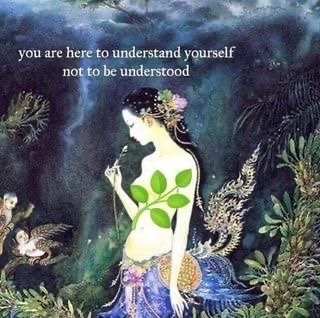
#growth#healing#love#personal growth#self love#kindness#spiritualjourney#loving yourself#spiritual development#spirituality#healingjourney#personal#self care#spiritualgrowth#understanding#inner peace#peace#inner child
728 notes
·
View notes
Text
❤️🔥„Evie how do I manifest xyz???“ watch me teach you manifestation basics in one post. ❤️🔥
Hello again! It is me: your favorite shifting blogger Evie and today we are covering the 101 of manifestation (based on the law of assumption). I get plenty of dms and asks that go along the lines of „Evie can I manifest a car?“ or „Evie can I manifest a boyfriend?“ or „Evie can I manifest to become the next president of the United States“ et cetera, et cetera.
The answer will always be as clear as day: YOU ABSOLUTELY CAN. Wanna know why I know that? BECAUSE YOU CAN MANIFEST EVERYTHING EVER 🥳🥳🥳.
„but how do I do that?“
Well this answer is gonna take some time as it is not definitive.
A lot of people like affirming as a method. Others love to visualize. Some people meditate and others listen to subliminals. I tend to get creative, I have written my manifestations on toilet paper and flushed it before and it fucking worked. What I mean to say is that there is no DEFINITIVE way to manifest stuff. If Mary can affirm like crazy and have her desire by tomorrow, this might have not worked for Jennifer. Jennifer affirmed for 169 days straight and never received her desire (because subconsciously she never thought that affirming would work). But when Jennifer lit a candle, thought about her desire and blew it out like a birthday candle, she had her desire 15 minutes later, because she always had this intuition that this would feel more natural to her.
At the end of the day: try as many things as you can, as you will naturally realize what makes sense to you and what doesn’t. I did try affirming like crazy and I never got any desire ever that way. But for example listening to music and feeling every single word sung in my heart has gotten me WAAAYYY further. There is no real reason for that other than some things work for you and some things don‘t.
„but why?“
Well. You believe certain things to be true. You might believe that there is no real love out there and that manifests and now you are lonely and in raging heartbreak. You might believe that you are the most glowing and magnetic person on this planet and for some reason that has proven itself through people thriving in your presence and begging to be near you. Because guess what. You manifested it.
„but I never intentionally tried to manifest that every person I ever interact with breaks my heart in a soul crushing manner!“
Look. You manifest literally every single aspect of your life. ALWAYS. The whole point of manifestation as I am teaching you is to consciously control the way things manifest. But you have always, are always, and for ever will have been always the only creator of your reality. Your thoughts, your beliefs, your emotions and your desires manifest constantly. If you subconsciously believe that you are the most unlovable person on this planet guess how this will manifest into the physical realm? As every person you meet ever breaking your heart and declaring you as unlovable. And the key to everything is realizing that only you can decide what happens in your life. You are the source. The author of the book and the director of the movie. The painter of the artwork and the chef in the kitchen. Nothing you have ever witnessed has never not happened THROUGH you. You just didn’t realize it.
„So how do I consciously manipulate my reality?“
That’s when you step in your actual power. Listen, you control things. Everything. Nothing happens without you ordering it to happen first. You decide what is real and what is not. That’s a fact.
Now when you imagine your crush Johnny to text you, and you declare that to be the truth, a stone-hard fact and a thing that 100% is real and has happened, that energy will reflect itself in your reality.
You manifest by deciding what is real.
You manifest by declaring your truth.
You manifest by choosing your fate and sticking to that choice.
„What if I decide for Johnny to text me and Johnny never texted me?“
Oh but he did text you. In your imagination remember? And we, the only creator of our realities, decided that that is real. So Johnny texted you. What you mean to say is:
„Why don‘t I see a text from Johnny in my physical reality?“
There it is. The ONE error everybody does when getting into manifestation: looking for validation from the physical realm.
„Well obviously I am looking for my manifestation in the 3D world, that‘s what I am manifesting it for Eves!“
That is the moment where I educate you about ✨states✨
When you desire something, like let’s say a new phone, you are doing one thing in particular: you are recognizing the lack of the new phone in your life. (The state of desire/ the state of lack) When you visualize yourself getting a new phone, and you decide that is real now, you inevitably enter the state of being wish-fulfilled, the state of having it. Your job is to stay as loyal as possible to that state. Because your state manifests.
If we visualize the new phone, declare that as real and true, enter the state of wish-fulfillment, then look for confirmation we already disproved our state of being wish-fulfilled because if why are you looking for proof of your truth if you knew it was true? You know for a fact that 2 + 2 equals 4. you are not spending every day proving or disproving that fact, are you?
By searching for confirmation you will re-enter the state of being in lack, because you are actively recognizing and accepting the lack of that desire by looking wether you already have it or not. If you truly declared the imagination as real, why would you search in the 3D for it?
The 3D reality will always conform to the 4D reality anyway so just accept that you have it the minute you visualize it/affirm it/ and so on. And that’s why searching for something in the 3D is pointless. If the imagination comes first, if that is the reality where everything happens, if that is the place where everything stems from, why are you searching in the goddamn reflection for validation? Your imagination is the top validation you could ask for because it is TRUE. IT IS REAL. Your physical copy of that will always always always only portray what you have created in your mind in the first place! Why are you looking for Johnny’s text message in the reality that is bound to copy your imagination anyways? Why aren’t you more concerned with what you are visualizing and thinking about all day because these things WILL show up regardless? And if Johnnys Text Message didn‘t manifest YET then why are you believing that reality WHEN IT ALL CAME FROM YOU ANYWAY. YOU CREATE EVERYTHING BRO. If you can’t see it yet that doesn’t mean it would have never appeared, that just means you entered the state of lack again because you have been searching at a place that always comes second anyway. Do not believe what you see, believe what you decide to be real. YOU DECIDE. YOU YOU YOU AND ONLY YOU.
„So the trick is to recognize imagination as real?“
Correct.
„What happens when I accidentally recognize the lack of something in the 3D? Is my manifestation then lost?“
Nope. As long as you stay loyal to your state, you are not losing anything. If you happen to think „god I manifested that stupid text from Johnny two hours ago where is it?“ and then correct yourself with for example something along the lines of „ahhh wait I remember! The DID text me! Two hours ago in my real reality! Silly me!“ and that’s it! No need to overthink it. You decide what is real, so if you don‘t dwell in the fact that your physical reality doesn‘t show the picture you want to see, and you keep on re-entering your state of wish-fulfilled, and make it your dominant state, nothing is lost. It is only lost if you decide that it is. If you accept the physical copy as the truth and not the place where it all stems from, the place where your manifestation is already done anyways, then you lose it. But only because you decided to lose it.
„Okay so Evie I want to manifest that Johnny and I get married but he is currently married to another woman and has eleven kids with her. Can I manifest my desire anyway?“
First of all: you can manifest everything
Second of all: because circumstances never matter!
„But what if I want to manifest to get into Harvard even if they already sent me their rejection letter?“
Even then.
If you are the only creator of your reality, then you have been the one responsible for these circumstances in the first place anyways. If you can put yourself into your circumstances, you can remove yourself out of them just as well.
It is not your job to figure out how your subconscious goes about eliminating your circumstances, your job is to concentrate on what you want to declare as real. And then declare it as real. And stay in your state of wish-fulfilled. The rest will happen by itself. Trust. Me.
„So how long do you think my manifestation will take to appear in my physical reality?“
Depends. What do you think how long these things should take? Because that’s what it will boil down to. If you believe that every single one of your manifestations arrives within 2 minutes, then that’s your reality bro, that‘s what’s true. If you believe that a manifestation will always take up to a month until it happens well then that’s your truth. The only limit there is your belief.
It also does not matter wether you are trying to manifest climate change to stop or a cup of coffee. There are no „big manifestations“ or „small manifestations“. Manifestation is manifestation. But you THINK that Johnny texting you is such a huge deal that you MAKE it to something harder to get so you spend more time dwelling in lack so it takes more time to appear. If I told you that manifesting a dandelion on the sidewalk is the same thing as manifesting fucking Obama to kiss you, you wouldn’t believe me because you take things like probability into account. Which is totally irrelevant. The question is not „how probable would this have been to happen to me if I didn’t manifest it?“ in order to figure out wether something will manifest faster or easier. The better question for this would be „how much do I want this to happen?“. Because as soon as you decide something is real, it is. And then it copies into your physical world. Without a doubt. Which is exactly why you should never catch yourself get impatient or „wait“ on your desires to appear in the 3D. The trick is to know it will happen anyways. But everytime you check the 3D or wait for change to happen then you are re-entering state of desire/lack. That‘s when you are accepting that what the 3D is showing you, must be a fact, EVEN THOUGH YOU DECIDE WHAT IS REAL AND WHAT ISNT IN THE FIRST PLACE.
„so basically how do I manifest a scholarship for example?“
Okay let’s take a test run. I want to manifest a scholarship. So I pick my most favorite method of manifesting which is visualizing (for example). I lay down in my bed, close my eyes, take a few deep breaths and really set the scene as detailed as I can. I imagine myself opening my laptop, clicking on my E-Mail Icon and read through the E-Mail I received in which I got accepted into my dream scholarship. I freak out because I have been waiting for this moment for ever and I am so happy and I let myself feel every single emotion that is connected to my desire being fulfilled. I open my eyes and I am happy because I know that this moment just happened. I enter the state of wish-fulfilled and now I go about my day all proud and confident because I know that since I declared my acceptance into the scholarship as real, it happens anyway. I know it is real, which is why I don’t get all worried about it showing up in the 3D and I let go of all the worry and all the anxiety attached to the situation where I still desired that scholarship. Because I don‘t anymore. Because I have it. Because I decided that that is what is real, so now it is.
Two days have passed and I still have no E-Mail in my account and the old me pops up and thinks „where is that scholarship that we manifested“ I immediately recognize that some part of me seems to think we are lacking something. I correct my behavior and remind myself through re-imagining the scene of me getting accepted to the scholarship and reminding myself consciously „that’s right! I already have the acceptance to the scholarship! It‘s real, I remember!“ and let go of the negative feelings attached to the state of desire. I stay loyal to the state of wish-fulfilled and I do not seek validation from the outside, only from my imagination because I know, that only my imagination is real, only my imagination is to be trusted.
„This sounds like it takes a lot of practice“
It does. Some people get used to this way of thinking easier than others. Some believe their 4D sooner than others do. Some might never accept the 4D as real and never consciously manifest anything ever because they are too set on viewing the 3D as factual and set-in-stone. Others accept the Imagination as truth immediately and have 100k dollars in their bank by tomorrow because they adapted to this manifestation-type-of-thinking faster than you did maybe.
But that is normal. Forreal. Some take years perfecting this skill, and others try it once and then leave it.
But to be fair: if you are manifesting literally everything in your life anyways, wouldn‘t you rather be able to control it at least? Even if it takes you several days-weeks-months-years to finally get it right? Doesn‘t that make so much more sense?
This post was inspired by a lot of asks and dms people have been sending me, and I genuinely hope I was able to help❤️
Thank you guys so much for trusting me and supporting my blog❣️
It truly means the world to me, knowing people are listening to my advice and seeing results from that❣️
I am yours in every reality,
Evie <3
#law of assumption#reality shifting#shifting realities#loa#law of attraction#manifestation#shifting#law of manifestation#shifting community#current reality#4d#3d#desired reality#spiritualjourney#spirituality#effortless manifestation#manifestation technique#manifestation story#manifesting#Manifest#manifest fast
541 notes
·
View notes
Text

#african#afrakan#kemetic dreams#africans#brownskin#afrakans#brown skin#african culture#afrakan spirituality#hoodoo#shamanism#spiritual#spirituality#spiritualjourney#spiritual awakening#spirit work
492 notes
·
View notes
Text

#self love#self confidence#self esteem#magic#spirituality#spiritualjourney#the universe#creativity#manifestation#spiritual#wicca#witch community#witchblr#law of manifestation#self love quotes#beautiful quote#quoteoftheday#life quote#quotes#words#power#positive energy#positive change#positive vibes#positive thoughts#positivity#love#love quotes#magick#art
2K notes
·
View notes
